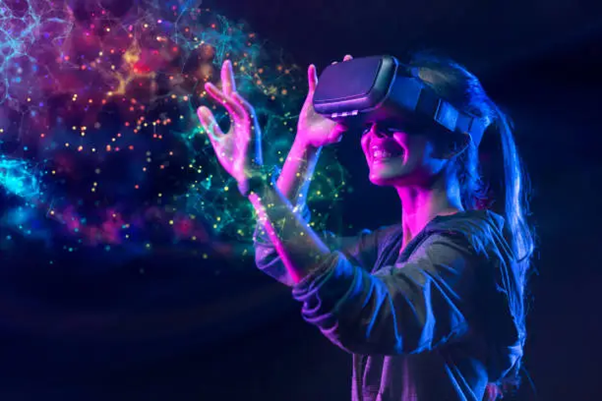Artificial Intelligence (AI) has been successfully used and integrated into multiple industries like business, finances, medicine, etc. Due to a massive number of algorithms, platforms, applications, and plugins, there’s a huge variability in using artificial Intelligence to complete tasks, resolve issues, and do other things that improve performance. For example, AI could be used for diagnostics to find bugs and errors in the system’s work.
The education sector also became a perspective field to use artificial Intelligence. It gives a lot more perspectives for students and teachers. Over time, AI was integrated into the educational field multiple times, and now we will examine each case, pointing out how technology changed the approach to education.
Table of Contents
AI for Global School Management
Administrative tasks are also a solid part of teachers’ work, as they take lots of time and effort. There are multiple activities, including extensive data set management, control of extracurricular activities, and other tasks. A properly configured AI-powered machine could cover these tasks so that teachers can switch focus on more important things. For example, an AI-based program could check writing tasks and prepare theoretical background for lessons.
AI as an Assistive Technology
It’s hard to argue that artificial Intelligence is an assistive technology for students, especially for individuals with special needs. For example, voice recognition and speech synthesis improve communication. Moreover, tools that visualize content or run simulations allow students to perceive information better. It’s not only about single projects – today, people are actively using AI-based tutors to examine topics, prepare for exams, complete challenging assignments, and simplify their education.
Using AI for Personalized Learning
Everyone has their own learning style. Some use more visuals while studying, while other students are kinesthetic learners. It all depends on each person’s preferences, but the fact is that everyone prefers to study in different ways, with different paces, different task-completing approaches, etc. Teachers may find it difficult to personalize lessons and materials for each student, so it’s an excellent decision to use AI and personalize learning this way. This is very good for several reasons.
Artificial Intelligence quickly analyzes large amounts of information, which helps to find patterns and develop educational programs for individuals. AI could also create individual lessons by making tasks more familiar and exciting.
Active Learning With AI
Active learning is a great alternative to classic education with boring theory and comprehensive practical tasks where students must somehow use the gained knowledge to Writemyessays or complete any other task. Artificial Intelligence gives more freedom to students, allowing them to do research, participate in hands-on activities, and create presentations using AI-based applications. With such activities, students will develop creativity and learn to work with multiple apps and programs.
Evaluate and Assess using Artificial Intelligence.
AI gives more freedom in all aspects, including evaluation and assessment. With the help of technology, individuals develop and apply new assessment strategies. It could be a combination of formative and summative assessment methods that provide a complex approach with project-based assessments, presentations, and other options.
Early Childhood Education
Children with different socioeconomic backgrounds have many gaps between them in different aspects of life, including education. Those who come from low-income households have lower chances of entering school with the same skills as their peers. Creating affordable audio-visual education systems based on AI could resolve the problem, as teachers will have more options to provide personalized support.
Predictive Modeling
Predictive modeling is based on an AI-powered program that analyzes large amounts of information to predict different outcomes like students’ behavior or reactions to several events. With predictive modeling, teachers can improve the existing education program or create a new one using information about students’ performance, grades, and other factors. Having data-driven analysis in education is essential because it helps students improve their performance and make progress in the problematic area.
Natural Language Processing
This is a field of artificial Intelligence that deals with making computer systems. Its main feature is understanding and interpreting human language, which helps to improve overall performance. The most popular example of using natural language processing is ChatGPT. When students see it as a tool to complete their homework, it should be no more than an assistive program.
It won’t give you absolutely correct answers to prompts, and the information should be changed once the answer is given. For example, you can use ChatGPT to clarify the context and decide whether to change the main request to continue research. Natural language processing is an effective method to automate education in many aspects for both students and teachers.
Learning Language
Courses of learning foreign languages are one of the most complicated activities for students. They have to master new grammar with specific rules and learn new vocabulary with lots of idioms and synonyms. AI-powered language learning algorithms help individuals by providing feedback and pointing out where students should be more attentive.
Learning Management Systems
This is a basic part of any institution as it simplifies student communication. Individuals share information, communicate, and collaborate with others without any issues. Students complete individual tasks, work in groups, share opinions on a problem, and find practical solutions. With AI implemented in learning management systems, students can work in an organized manner and track progress.
Implementing AI for Gamification
The main idea of gamification is to increase interest, making students receive achievements after reaching milestones. By implementing VR and AR technologies, institutions give individuals more freedom to practice (running surgery simulations, providing emergency care, etc.), which is way more valuable than working with mannequins in classrooms. Moreover, the system gives hints and shows students their mistakes, explaining what can be a better solution.
Final Thoughts
Artificial Intelligence gives massive variability to improve the education process. Teachers optimize the working process, spending less time on non-important activities and focusing on what really matters, while students use AI-powered technologies to realize new approaches to learning materials and completing tasks. More and more institutions have started using IT, and it caused lots of positive changes in the whole education approach. Technological progress advances tremendously, and the future is closer than we think.










